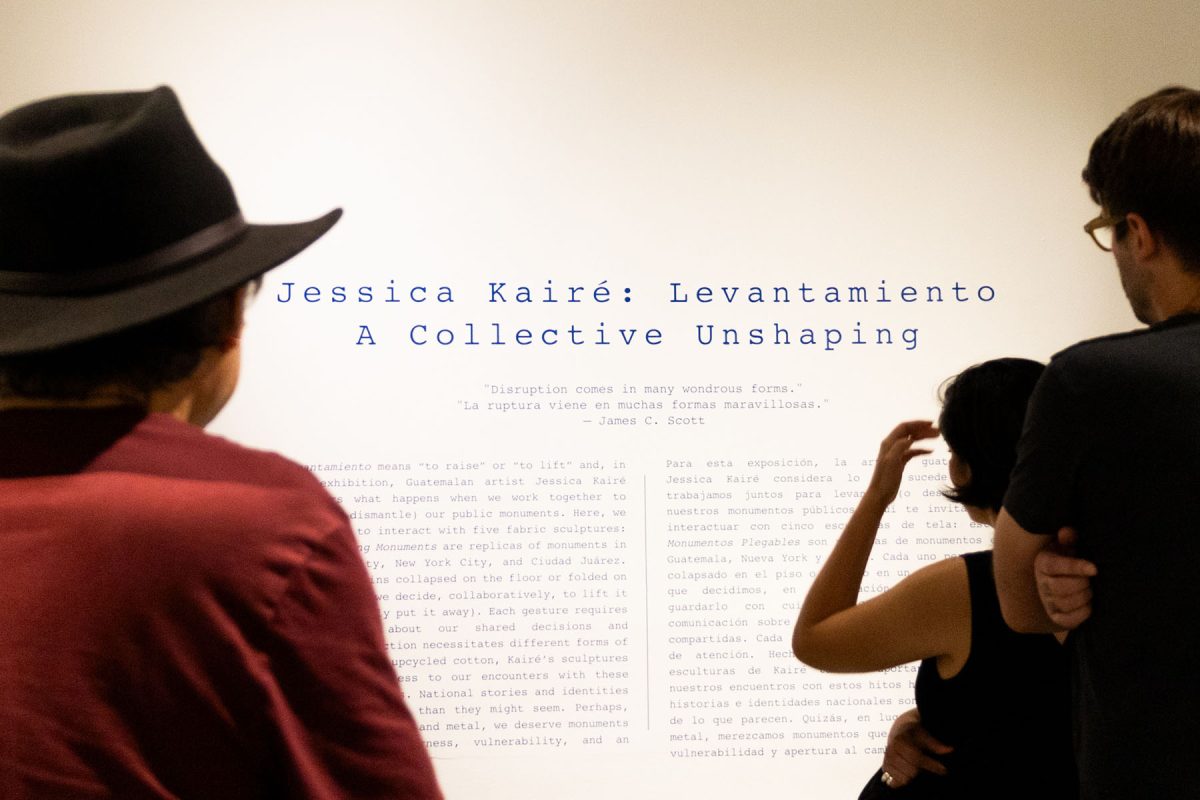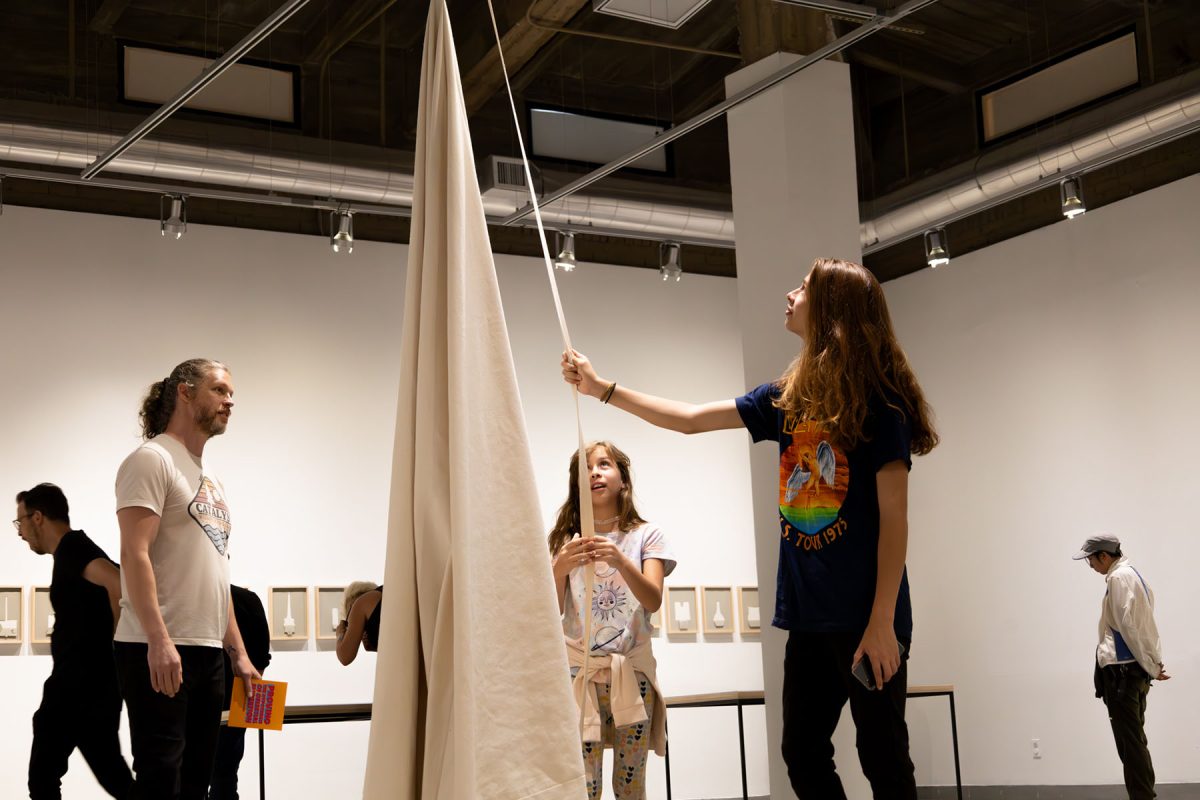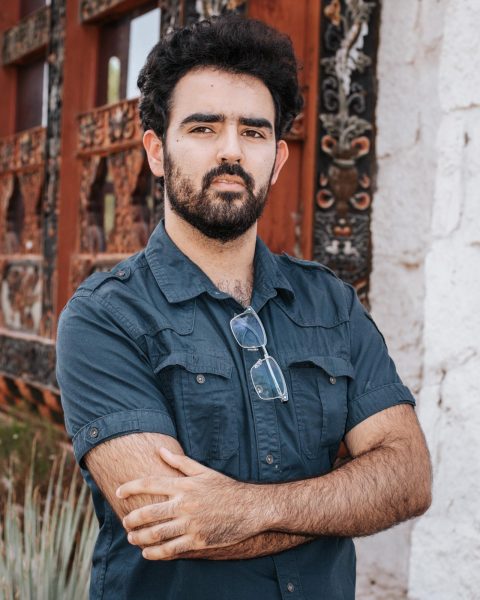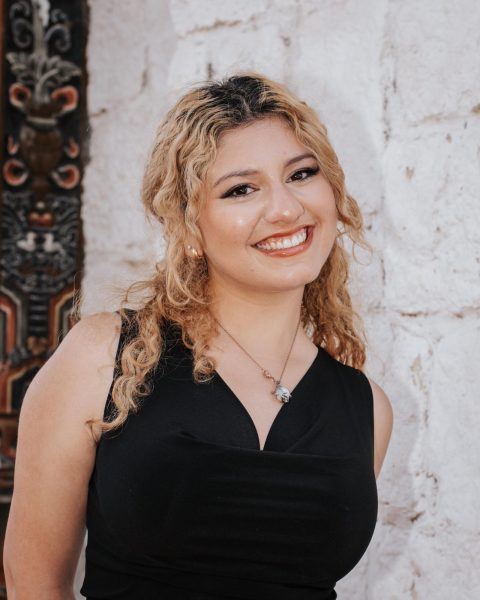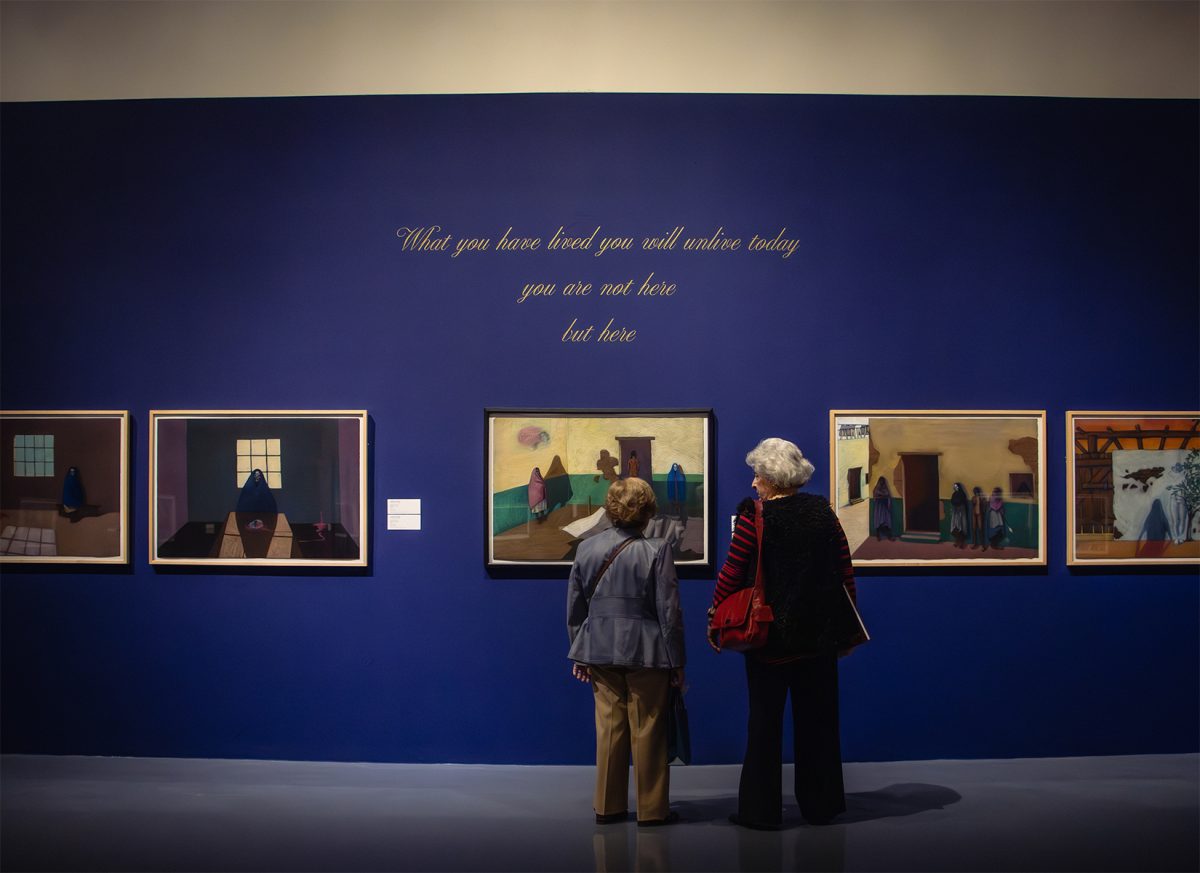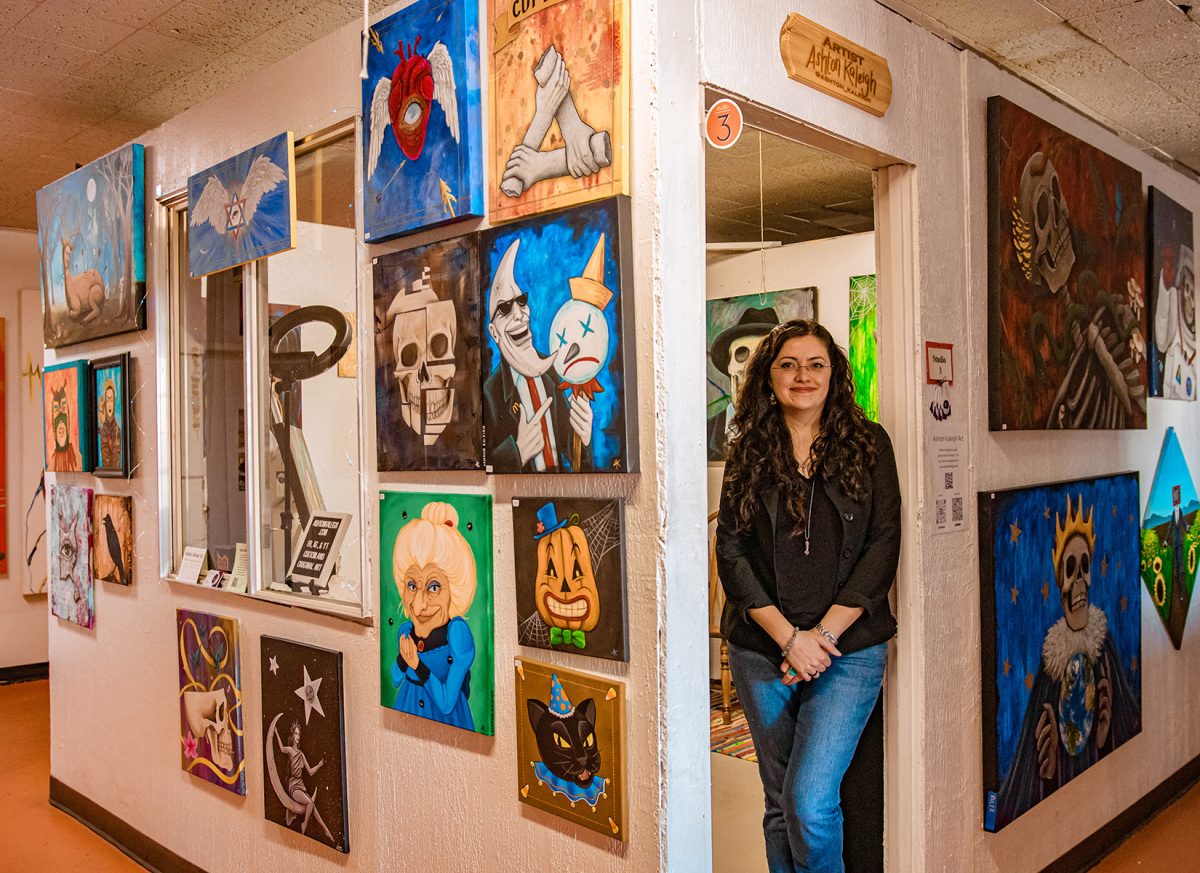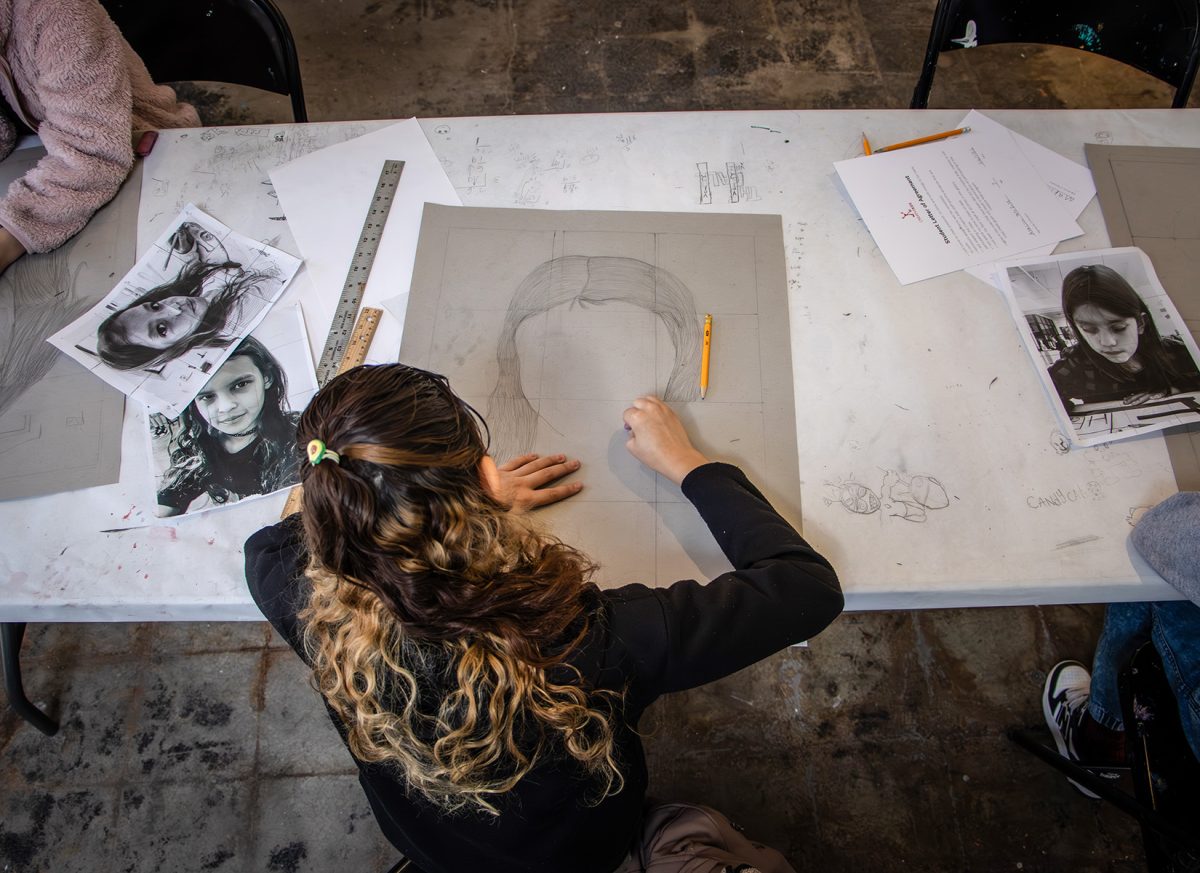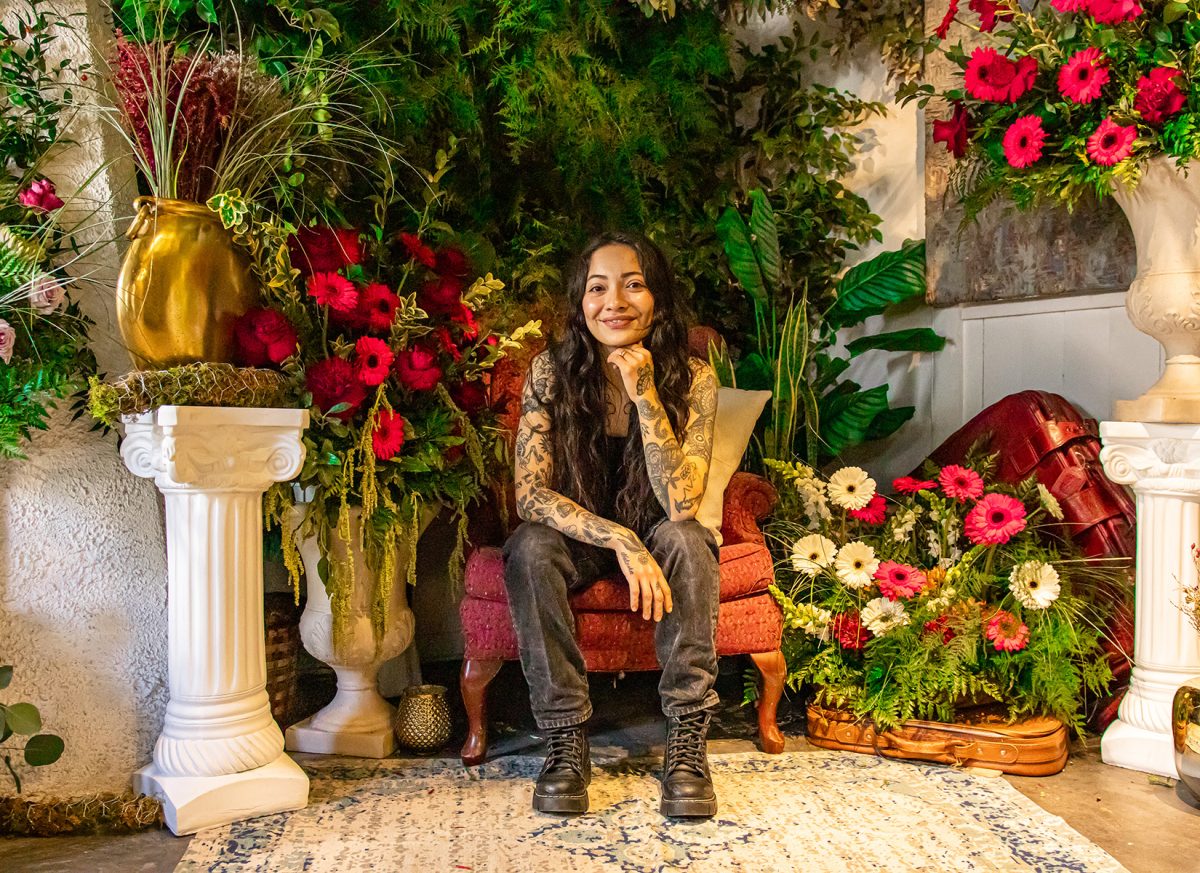On the hills of the UTEP campus, the university has crowned the mountains with a collection of evocative art exhibits. “Levantamiento,” and “La Frontera” are part of the Rubin Center’s fall catalog, a collection created by Latin American artists. “Levantamineto,” talks about the controversial rise and fall of historical monuments.
The exhibit was made by Guatemalan artist, Jessica Kairé, who sought an interactive way to bring her sculptures to life. The exhibition is composed of five fabrics that either outline a particular monument or recreates the full real-life statue on a smaller scale. All the sculptures are based on real-life monuments, including the independence plaque in her home of Guatemala City, the base of Christopher Columbus in New York City, and the “Cigarrillo” piece in Ciudad Juarez.
Kairé spoke on the origins of her inspiration at the opening reception.
“I tend to be a more tactile person, I wanted to create these monuments that could be lifted and dismantled to be preserved,” Kairé said. “In my home country, a lot of people tear these monuments apart for valuable materials, but this way they can be kept safe.”
Kairé had a mixed upbringing, having a passion for the arts at a young age and starting her formal art studies in Guatemala, New York City and Los Angeles. Her work had been shown in various galleries around these cities, but this exhibit is Kairé’s first solo exhibit.
Laura Augusta, curator for the Rubin Center, not only highlights these accomplishments but the geographical importance of the exhibit.
“We are the only contemporary art space in several hours in any direction. Our mission is to create a safe space for students to discuss contemporary issues,” Augusta said. “We are at the forefront of preserving contemporary artifacts and artists, and ‘Levantamiento’ felt natural to our gallery.”
Augusta elaborates on the importance of art not only for the university, but for curious visitors and aspiring artists.
“Artistic research is different than scientific research, for them to understand why they are different, and to provide a different entry point for history or other disciplines,” Augusta said. “I believe every student from every discipline should experience contemporary art, to truly observe and appreciate the work of others, and with others.”
Kairé’s vision wanted to encompass that sense of expression with collaboration. “Levantamiento” translates to “to lift” or “movement.” Her goal was to create a unique monument for the country and city but also for the people who maintain the monument and the spirit of its meaning. Kairé has stated this is a decades long project in its infancy and expanding it will require more cultural knowledge of each new statue.
“Every type of art has its validity, even I have experimented with other types, I just prefer the more hands-on approach,” Kairé said. “Each sculpture is a testament to its home culture and expanding it will require to live and learn about that country or city.”
“Levantamiento” is an interactive exhibit, and the monuments at display vary, but do not be afraid to bring someone along as Kairé explains, “There are strings to lift up the monuments, but none can be done by itself, it takes all of us to bring them to life.”
For more information about “Levantamiento”, visit the Stanlee and Gerald Rubin Center for the visual arts at 500 W. University Ave. or at utep.edu/rubin/exhibitions.
Eugenio Cantu is a contributor and may be reached at [email protected]


